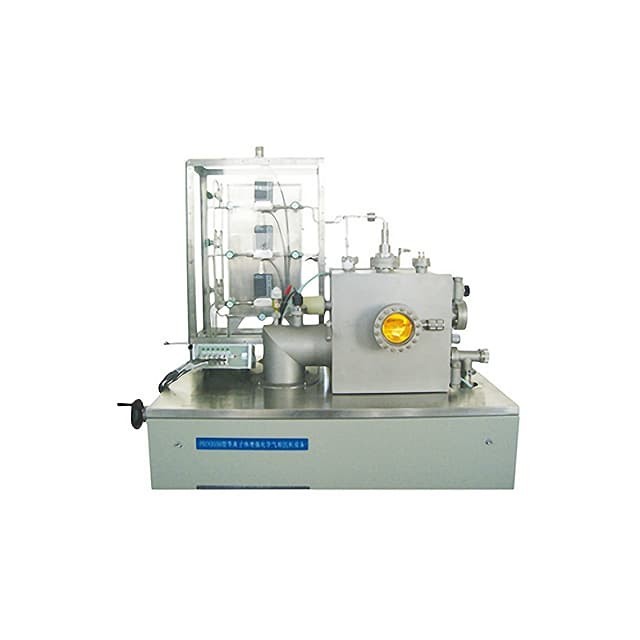
CVD & PECVD Furnace
Inclined Rotary Plasma Enhanced Chemical Deposition PECVD Tube Furnace Machine
Item Number : KT-PED
Price varies based on specs and customizations
- Heating temperature
- ≤800℃
- Vacuum degree
- ≤5×10-5Pa
- Output power
- 500W—1000W
Shipping:
Contact us to get shipping details Enjoy On-time Dispatch Guarantee.
Why Choose Us
Reliable PartnerEasy ordering process, quality products, and dedicated support for your business success.
Plasma Enhanced Chemical Vapor Deposition (PECVD) Coating Machine

Advanced PECVD Systems by KINTEK: Precision Coating, Tailored to Your Needs
Leveraging exceptional R&D and in-house manufacturing, KINTEK delivers cutting-edge Plasma Enhanced Chemical Vapor Deposition (PECVD) systems designed for diverse laboratories and industrial applications. PECVD is a sophisticated vacuum thin film deposition technique that employs plasma to activate precursor gases. This allows for the creation of high-quality, uniform coatings at significantly lower temperatures than traditional Chemical Vapor Deposition (CVD), expanding the possibilities for heat-sensitive substrates (like plastics) and a diverse range of coating materials (including dielectrics, semiconductors, and insulators).
Our PECVD machines are a key offering within KINTEK's comprehensive suite of advanced high-temperature furnace solutions, which also includes Muffle, Tube, Rotary Furnaces, Vacuum & Atmosphere Furnaces, and other CVD/MPCVD Systems. We pride ourselves on our strong deep customization capability, ensuring that your PECVD system is precisely engineered to meet your unique experimental and production requirements.
Key Features
KINTEK's Plasma Enhanced Chemical Vapor Deposition (PECVD) Coating Machines offer a range of features designed for superior performance and versatility:
- Low-Temperature Deposition: Enables high-quality film formation on delicate or low melting point substrates without thermal damage, significantly broadening material compatibility.
- High Deposition Rates: Achieves rapid film growth, maximizing throughput, reducing processing time, and increasing overall productivity.
- Uniform and Crack-Resistant Films: Produces coatings with exceptional consistency in thickness and properties across the substrate, minimizing defects like cracking for reliable and durable results.
- Excellent Substrate Adhesion: Ensures strong bonding between the deposited film and the substrate material, leading to long-lasting performance and preventing delamination.
- Versatile Coating Capabilities: Supports deposition of a wide array of materials, such as SiO2, SiNx, SiOxNy, and more, catering to diverse application needs.
- Conformal Coating on Complex Geometries: Capable of uniformly coating substrates with intricate shapes and topographies, ensuring comprehensive coverage and optimal performance.
- User-Friendly Design: Engineered for low maintenance requirements and straightforward installation, minimizing downtime and simplifying integration into your workflow.
Technical Specifications
| Sample holder | Size | 1-6 inches |
| Rotate speed | 0-20rpm adjustable | |
| Heating temperature | ≤800℃ | |
| Control accuracy | ±0.5℃ SHIMADEN PID Controller | |
| Gas purge | Flow meter | MASS FLOWMETER CONTROLLER (MFC) |
| Channels | 4 channels | |
| Cooling method | Circulating water cooling | |
| Vacuum chamber | Chamber size | Φ500mm X 550mm |
| Observation port | Full view port with baffle | |
| Chamber material | 316 Stainless steel | |
| Door type | Front open type door | |
| Cap material | 304 Stainless steel | |
| Vacuum pump port | CF200 flange | |
| Gas inlet port | φ6 VCR connector | |
| Plasma power | Source power | DC power or RF power |
| Coupling mode | Inductively coupled or plate capacitive | |
| Output power | 500W—1000W | |
| Bias power | 500v | |
| Vacuum pump | Pre- pump | 15L/S Vane vacuum pump |
| Turbo pump port | CF150/CF200 620L/S-1600L/S | |
| Relief port | KF25 | |
| Pump speed | Vane pump:15L/s,Turbo pump:1200l/s或1600l/s | |
| Vacuum degree | ≤5×10-5Pa | |
| Vacuum sensor | Ionization/resistance vacuum gauge/film gauge | |
| System | Electric power supply | AC 220V /380 50Hz |
| Rated power | 5kW | |
| Dimensions | 900mm X 820mm X870mm | |
| Weight | 200kg |
Applications
Plasma Enhanced Chemical Vapor Deposition (PECVD) coating machines from KINTEK offer a versatile solution for a wide range of industries and cutting-edge applications:
- LED Lighting: Deposition of high-quality dielectric and semiconductor films crucial for efficient and durable light-emitting diodes (LEDs).
- Power Semiconductors: Formation of insulating layers, gate oxides, and other critical film components in power semiconductor devices.
- MEMS (Microelectromechanical Systems): Fabrication of precise thin films for sensors, actuators, and other micro-scale devices.
- Optical Coatings: Deposition of anti-reflection coatings, optical filters, protective layers, and other functional optical components.
- Thin Film Solar Cells: Production of amorphous and microcrystalline silicon thin films, as well as other semiconductor materials, for photovoltaic devices.
- Surface Modification: Enhancement of material surface properties, including improved corrosion resistance, wear resistance, hardness, and biocompatibility.
- Nanotechnology: Synthesis of advanced nanomaterials, such as nanoparticles, nanowires, and ultra-thin films for novel applications.
Why Partner with KINTEK for PECVD Technology?
Choosing KINTEK for your PECVD needs means investing in quality, reliability, and tailored solutions:
- Deep Customization: We specialize in configuring PECVD systems to your exact specifications, ensuring optimal performance for your unique applications and research goals.
- Advanced R&D and Manufacturing: Our in-house expertise drives innovation, allowing us to offer state-of-the-art PECVD technology.
- High-Quality Construction: Our systems feature rigid designs built with premium materials like stainless steel for stability, durability, and extended working life.
- Reliable Performance: Engineered for consistent results, our PECVD machines produce high-quality, uniform thin films with excellent adhesion.
- Comprehensive Support: From easy installation to low maintenance requirements, we ensure our systems are user-friendly and backed by responsive customer service.
- Versatility: Our machines can deposit a wide array of materials, making them suitable for diverse research and industrial processes.
Working Principle
Plasma Enhanced Chemical Vapor Deposition (PECVD) is a process that utilizes plasma (an ionized gas) to stimulate and enhance chemical reactions during the thin film deposition process. Unlike conventional CVD which relies solely on high temperatures to drive reactions, PECVD employs high-energy plasma. This plasma energizes the precursor gases, leading to the formation of reactive species at significantly lower substrate temperatures. These reactive species then adsorb onto the substrate surface and undergo chemical reactions to form a solid, thin film. This method allows for the deposition of various high-quality films, such as SiO2, SiNx, and SiOxNy, and is particularly effective for creating amorphous or microcrystalline silicon thin films used in solar cells. The lower processing temperatures minimize thermal stress on substrates, reduce pinholes, and prevent cracking, making PECVD ideal for a broader range of materials and applications.
Customize Your PECVD Solution with KINTEK
Ready to elevate your thin film deposition capabilities? KINTEK’s experts are on hand to discuss your specific project needs and challenges. We can help you configure a Plasma Enhanced Chemical Vapor Deposition system perfectly tailored to your experimental or production requirements. Benefit from our deep customization expertise and advanced technology to achieve superior results.
Contact us today to explore your custom PECVD solution!
FAQ
What Is A Tube Furnace And How Does It Work?
What Are The Main Applications Of A Rotary Tube Furnace?
What Is The Principle Of A Rotary Furnace?
What Is A Rotating Furnace Used For?
What Are The Main Applications Of Multi-zone Tube Furnaces?
What Are The Common Applications Of A Split Tube Furnace?
What Is A Vertical Tube Furnace?
What Are The Main Applications Of Tube Furnaces?
What Are The Key Features Of A Rotary Tube Furnace?
What Are The Advantages Of Using A Rotary Furnace?
What Are The Main Types Of Rotating Furnaces Available?
What Are The Key Features Of Multi-zone Tube Furnaces?
What Are The Key Features Of A Split Tube Furnace?
What Are The Applications Of A Vertical Tube Furnace?
What Are The Advantages Of Using A Tube Furnace?
How Does A Rotary Tube Furnace Work?
What Are The Key Features Of A Rotary Furnace?
How Does A Rotating Furnace Work?
How Does A Multi-zone Tube Furnace Work?
How Does A Split Tube Furnace Work?
What Are The Advantages Of A Vertical Tube Furnace?
What Types Of Tube Furnaces Are Available?
What Are The Advantages Of Using A Rotary Tube Furnace?
What Are The Common Applications Of A Rotary Furnace?
What Are The Advantages Of Using A Rotating Furnace?
What Are The Advantages Of Using A Multi-zone Tube Furnace?
What Are The Advantages Of Using A Split Tube Furnace?
How Does A Vertical Tube Furnace Work?
What Temperature Ranges Can Tube Furnaces Achieve?
What Temperature Can A Rotary Tube Furnace Reach?
How Does A Rotary Furnace Handle Different Materials?
What Safety Features Are Included In Rotating Furnaces?
What Types Of Multi-zone Tube Furnaces Are Available?
What Temperature Can A Split Tube Furnace Reach?
What Types Of Vertical Tube Furnaces Are Available?
Can Tube Furnaces Operate Under Different Atmospheres?
What Types Of Materials Can Be Processed In A Rotary Tube Furnace?
Can Rotating Furnaces Be Customized For Specific Applications?
Why Is The Split Design Beneficial In A Tube Furnace?
Why Choose A Vertical Tube Furnace Over A Horizontal One?
What Makes KINTEK Tube Furnaces Special?
What Temperature Ranges Can Vertical Tube Furnaces Achieve?
Are Vertical Tube Furnaces Customizable?
4.8
out of
5
This machine is a game-changer! The precision and efficiency are unmatched. Worth every penny!
4.9
out of
5
Incredible technology! The inclined rotary feature makes all the difference. Superb quality!
4.7
out of
5
Fast delivery and easy setup. The performance exceeds expectations. Highly recommend!
4.9
out of
5
Top-notch durability and advanced features. This machine is built to last. Impressive!
4.8
out of
5
The PECVD process is flawless. Such a reliable and high-quality machine. Love it!
4.7
out of
5
Great value for money. The technology is cutting-edge and the results are consistent.
4.9
out of
5
Exceptional performance! The rotary design enhances uniformity. A must-have for labs!
4.8
out of
5
Outstanding machine! The plasma enhancement is brilliant. Delivered faster than expected.
4.7
out of
5
Perfect for high-throughput applications. The build quality is exceptional. Very satisfied!
4.9
out of
5
Innovative and reliable. The inclined tube design is genius. Works like a charm!
4.8
out of
5
Fantastic investment! The machine delivers consistent, high-quality results. Highly impressed!
REQUEST A QUOTE
Our professional team will reply to you within one business day. Please feel free to contact us!
Related Products

Inclined Rotary Plasma Enhanced Chemical Deposition PECVD Tube Furnace Machine
Advanced PECVD Tube Furnace for precise thin film deposition. Uniform heating, RF plasma source, customizable gas control. Ideal for semiconductor research.

Slide PECVD Tube Furnace with Liquid Gasifier PECVD Machine
KINTEK Slide PECVD Tube Furnace: Precision thin film deposition with RF plasma, rapid thermal cycling, and customizable gas control. Ideal for semiconductors and solar cells.

1700℃ High Temperature Laboratory Tube Furnace with Quartz or Alumina Tube
KINTEK's Tube Furnace with Alumina Tube: Precision heating up to 1700°C for material synthesis, CVD, and sintering. Compact, customizable, and vacuum-ready. Explore now!

1400℃ High Temperature Laboratory Tube Furnace with Quartz and Alumina Tube
KINTEK's Tube Furnace with Alumina Tube: Precision high-temperature processing up to 2000°C for labs. Ideal for material synthesis, CVD, and sintering. Customizable options available.
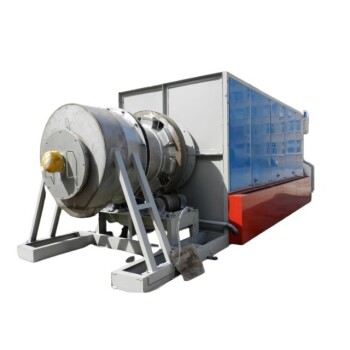
Electric Rotary Kiln Small Rotary Furnace for Activated Carbon Regeneration
Electric Activated Carbon Regeneration Furnace by KINTEK: High-efficiency, automated rotary kiln for sustainable carbon recovery. Minimize waste, maximize savings. Get a quote!

RF PECVD System Radio Frequency Plasma Enhanced Chemical Vapor Deposition
KINTEK RF PECVD System: Precision thin-film deposition for semiconductors, optics & MEMS. Automated, low-temperature process with superior film quality. Custom solutions available.

Vertical Laboratory Quartz Tube Furnace Tubular Furnace
Precision KINTEK Vertical Tube Furnace: 1800℃ heating, PID control, customizable for labs. Ideal for CVD, crystal growth & materials testing.

Electric Rotary Kiln Small Rotary Furnace Biomass Pyrolysis Plant Rotating Furnace
KINTEK's Rotary Biomass Pyrolysis Furnace converts biomass to biochar, bio-oil, and syngas efficiently. Customizable for research or production. Get your solution now!

1200℃ Split Tube Furnace Laboratory Quartz Tube Furnace with Quartz Tube
Discover KINTEK's 1200℃ Split Tube Furnace with quartz tube for precise high-temperature lab applications. Customizable, durable, and efficient. Get yours now!

High Pressure Laboratory Vacuum Tube Furnace Quartz Tubular Furnace
KINTEK High Pressure Tube Furnace: Precision heating up to 1100°C with 15Mpa pressure control. Ideal for sintering, crystal growth, and lab research. Customizable solutions available.

Laboratory Quartz Tube Furnace RTP Heating Tubular Furnace
KINTEK's RTP Rapid Heating Tube Furnace delivers precise temperature control, rapid heating up to 100°C/sec, and versatile atmosphere options for advanced lab applications.

Vacuum Sealed Continuous Working Rotary Tube Furnace Rotating Tube Furnace
Precision rotary tube furnace for continuous vacuum processing. Ideal for calcination, sintering, and heat treatment. Customizable up to 1600℃.
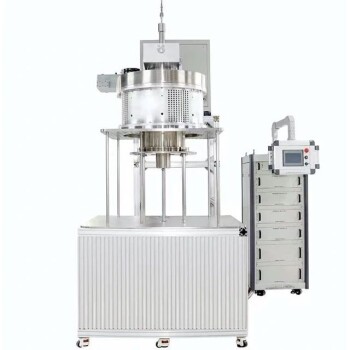
915MHz MPCVD Diamond Machine Microwave Plasma Chemical Vapor Deposition System Reactor
KINTEK MPCVD Diamond Machine: High-quality diamond synthesis with advanced MPCVD technology. Faster growth, superior purity, customizable options. Boost production now!
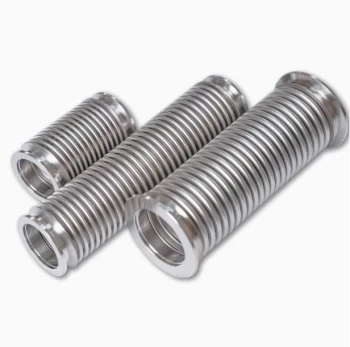
High Performance Vacuum Bellows for Efficient Connection and Stable Vacuum in Systems
KF ultra-high vacuum observation window with high borosilicate glass for clear viewing in demanding 10^-9 Torr environments. Durable 304 stainless steel flange.
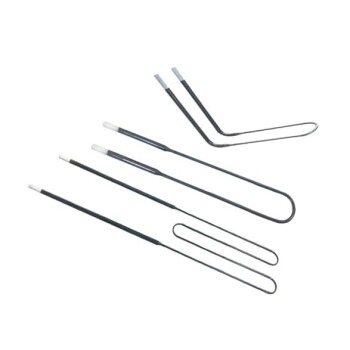
Molybdenum Disilicide MoSi2 Thermal Heating Elements for Electric Furnace
High-performance MoSi2 heating elements for labs, reaching 1800°C with superior oxidation resistance. Customizable, durable, and reliable for high-temperature applications.

CF KF Flange Vacuum Electrode Feedthrough Lead Sealing Assembly for Vacuum Systems
Reliable CF/KF flange vacuum electrode feedthrough for high-performance vacuum systems. Ensures superior sealing, conductivity & durability. Customizable options available.
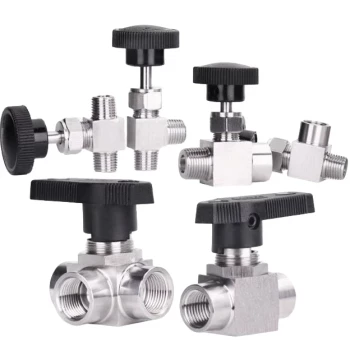
304 316 Stainless Steel High Vacuum Ball Stop Valve for Vacuum Systems
KINTEK's 304/316 stainless steel vacuum ball valves and stop valves ensure high-performance sealing for industrial and scientific applications. Explore durable, corrosion-resistant solutions.

Vacuum Hot Press Furnace Machine Heated Vacuum Press
KINTEK Vacuum Hot Pressing Furnace: Precision heating & pressing for superior material density. Customizable up to 2800°C, ideal for metals, ceramics, and composites. Explore advanced features now!

Multi Heating Zones CVD Tube Furnace Machine for Chemical Vapor Deposition Equipment
KINTEK's Multi-Zone CVD Tube Furnaces offer precision temperature control for advanced thin film deposition. Ideal for research and production, customizable for your lab needs.
